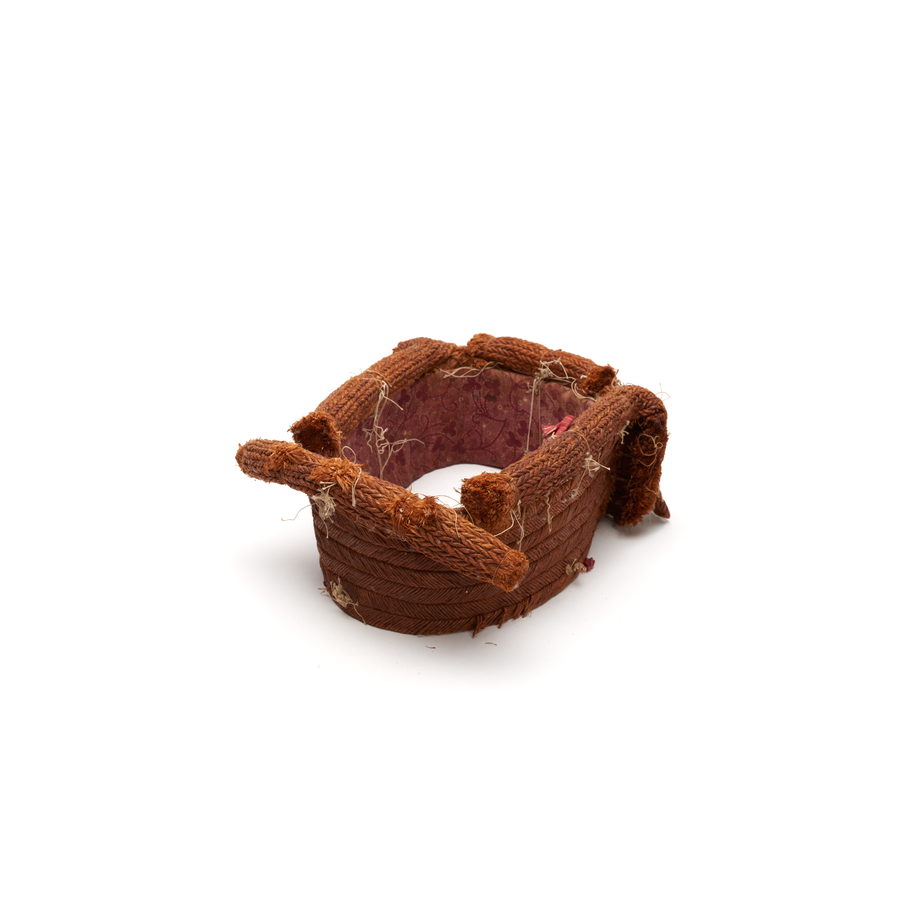T´łagakwame'
Headpiece
Cedar Bark regalia is sacred and used in all except one of the Kwakwaka’wakw ceremonies. Although they may appear the same, each object is unique and is only used for specific dances.
Catalogue Information
Provenance
Owned by Harry Hanuse until its forced surrender to Indian Agent William Halliday on March 25, 1922. Halliday later displayed and photographed the seized pieces at the Parish Hall in Alert Bay. After doing an inventory, he crated the items in June, and at the end of September he shipped them to Edward Sapir at the National Museum of Man (now the Canadian Museum of History). They remained the property of the NMM until their repatriation by the U’mista and Nuyumbalees Cultural Societies in 1979. In September 1993 Dan Hanuse Sr. requested that his father's pieces be transferred from Nuyumbalees to U'mista as per the wishes of the majority of Harry Hanuse's descendants.
Materials
Bark, Cedar; Fibre, Cotton
Dimensions
9.0 cm
Accession Number
94.09.003
Physical Description
Cedar bark headpiece consisting of six bands of red-dyed cedar bark wrapped and slanted in alternate directions. At the upper edge is a longer band of cedar bark strand dyed red, wrapped in an elaborate pattern. To this edge are attached four tubes of cedar bark strands, twined in a complex pattern. These bands are sewn to a main head band which is possibly cedar bark wrapped in red fabric. The ring is misshapen. Brown.
